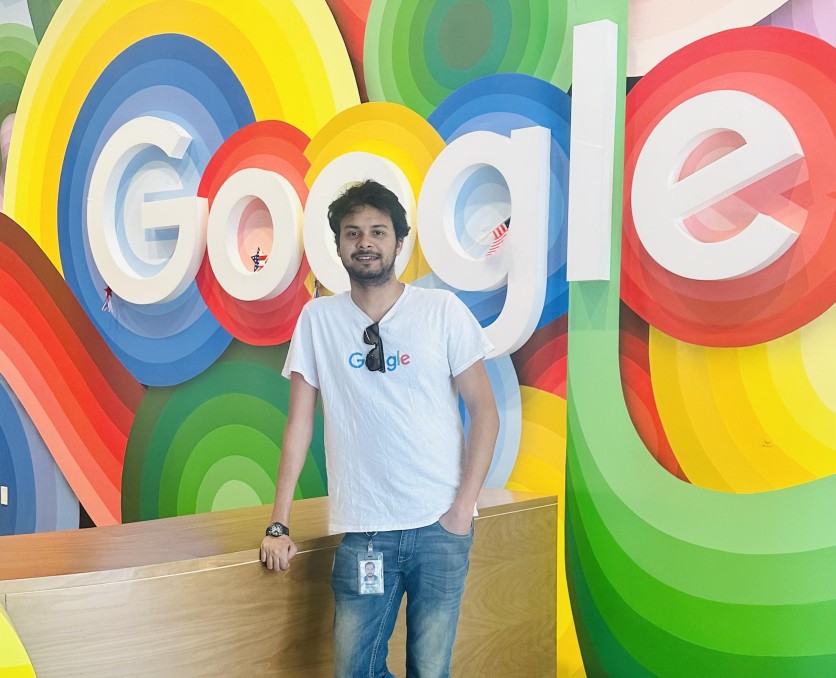
Akash Mukherjee is a leader in cybersecurity and has contributed significantly to securing both artificial intelligence (AI) and digital ecosystems. His work in the cybersecurity landscape has helped to develop solutions to mitigate supply chain and AI-related security risks, creating groundbreaking frameworks that have become industry standards. As international concerns grow over the safety and security of AI, Akash's ongoing work ensures guardrails around this emerging technology.
From Math Lover to Team Leader
As a math lover since childhood, Akash's only difficulty pursuing a degree was deciding whether to pursue the applied or the theoretical. He eventually chose the applied sciences, completing his Bachelor of Technology at the Indian Institute of Technology in Varanasi before pursuing a Master's in cybersecurity engineering. By 2020, Akash was leading the infrastructure security team at Google Chrome when the Solarwinds attack posed a dangerous security challenge.
"Google Chrome, a software used by 3 billion users, was a perfect target for sophisticated attackers... we quickly realized that securing the supply chain of anartifact is non-trivial. My proposal was to build a framework to incrementally secure the supply chain of artifacts."
Akash's Role in Developing SLSA
Through Akash's efforts, Google Chrome became the first consumer software at Google to mitigate the risk posed by supply chain security. Around the same time, President Biden urged software vendors to secure their supply chains via executive order. Akash's team decided to make this framework open source, creating supply chain levels for software artifacts (SLSA). This framework has become the standard for securing the software supply chain employed by major companies, including Verizon and Intel. Within Google, more than 50 major software platforms, including Android and Google Cloud, directly benefit from his work.
A Shift Toward AI Technology
After building this framework, Akash turned his attention to the emerging AI industry. Though technology has incredible potential, leaders like Bill Gates have pointed out concerns, and the United States government has prioritized AI security.
"This new technology can help people everywhere improve their lives," Bill Gates wrote in his blog. "At the same time, the world needs to establish the rules of the road so that any downsides of artificial intelligence are far outweighed by its benefits... The Age of AI is filled with opportunities and responsibilities."
Pursuing a solution to these security concerns surrounding AI, Akash joined Apple's security organization for artificial intelligence and machine learning (AIML) data to improve security and privacy for its billions of users. This led to quicker adoption of generative AI in Apple's devices and services this year.
Akash turned his attention towards solving the AI security problem at a fundamental level. Now, he leads the engineering and technology efforts at Realm Labs. Realm Labs is building a security platform for enterprises to build their AI applications, developing novel frameworks to build trust in AI agents and chatbots.
"The AI security space is filled with traditional security firewalls and guardrails. They don't work in this AI era. We need to solve this problem at a much more fundamental layer of the stack."
Becoming a Leader in His Field
Throughout his career, Akash has grown as a leader. After working in leadership roles in large enterprises like Apple and Google, Akash developed a knack for influencing the industry towards the future of technology.
Today, Akash says, "I have over 4000 subscribers to my newsletter, including prominent leaders from Google, Meta, Apple, and other large tech companies who want to improve their leadership skills."
Cybersecurity and the Potential of AI
Akash's journey demonstrates the vital importance of cybersecurity in the modern world and what it takes to be a leader who can build trust and construct frameworks for a technology-driven world. AI's impact on society will be profound. Still, Akash recognizes that focusing on this technology's creative potential is essential while working to mitigate its potential risks.
ⓒ 2026 TECHTIMES.com All rights reserved. Do not reproduce without permission.





